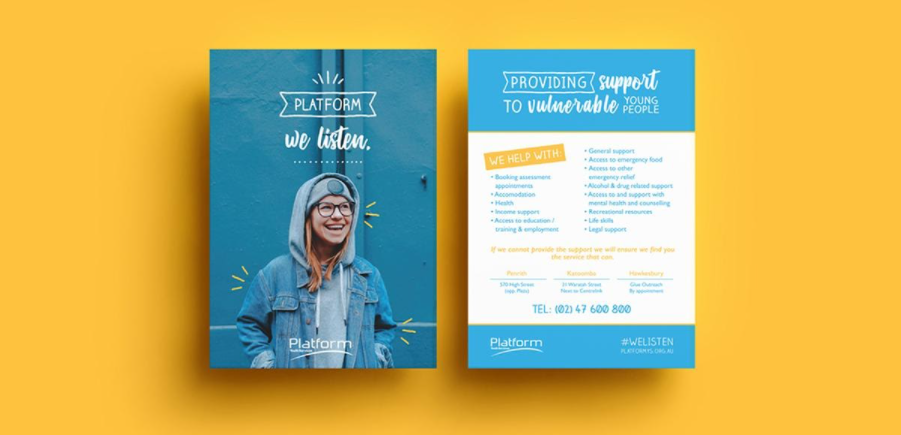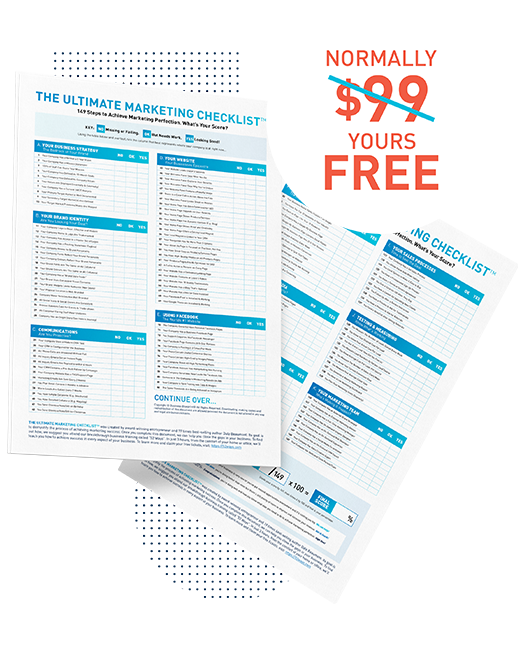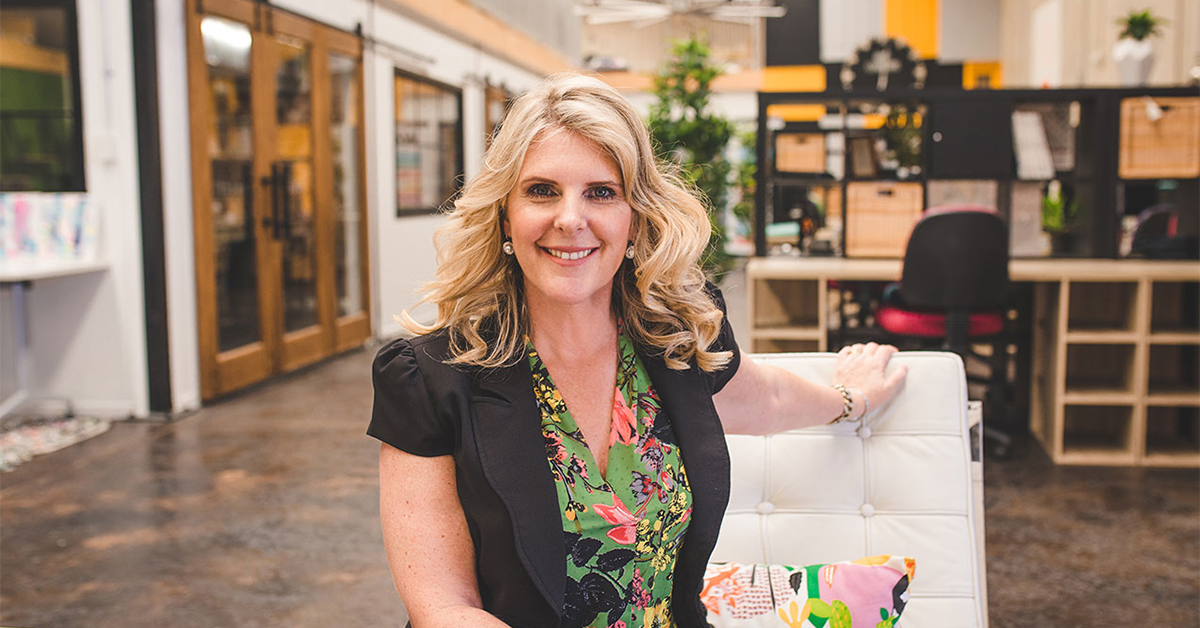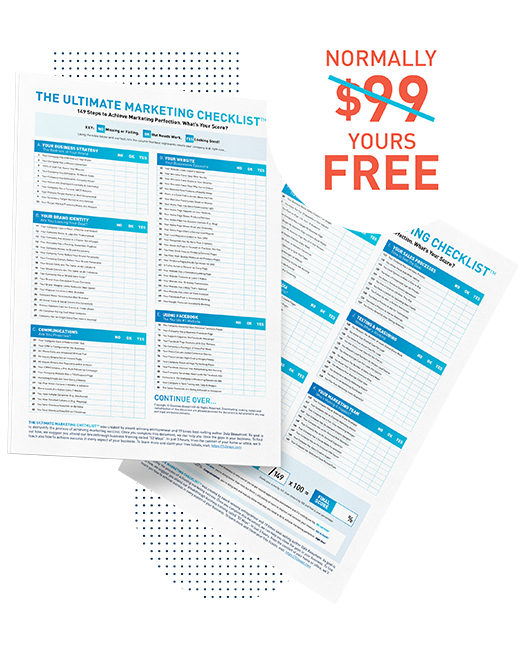You have most likely heard of the 6 or even 7 P’s of a marketing mix. These extend from product, place, price, promotion, people, process and even purple cow (thanks Seth Godin).
While they are great points for marketing, they don’t quite hit the mark when it comes to branding. A fundamental difference between marketing and branding is that marketing is very much a ‘push’ tactic. You push your message out to the market. Branding on the other hand is a ‘pull’ tactic where you pull customers towards the brand.
Connection is where branding comes into its own and turns a business from simply being transactional, to one that truly resonates with their customer.
The 4 Power P’s of Branding
If you focus on these 4 P’s they will help you build a brand that will connect and resonate with your clients so that they not only continue to buy from you, but will also tell their friends about you too.
#1 – Personality
Most people are really confused as to where they should start when developing their brand. We always recommend that you start with discovering your Brand Personality. This is easier said than done, as people are confused about their own personality, let alone that of their brand. Finding your Brand Personality becomes a fundamental framework in which to craft not just the visual aspect of your brand, but also the language and tone, the culture you want to create and most importantly how you want people to feel when experiencing your brand.
There are a number of personality models but we like the one built off Swiss psychologist Carl Jung’s 12 personality archetypes. These 12 personalities are ones that we all intrinsically know and understand. Whether I mention an athletic teenager, a laidback neighbour or a caring granny, you would not only have conjured up in your mind what they look like but also their personality traits.
I bet that the caring granny does not have dyed black hair, thick set makeup and rocking out in leather pants while smoking up a storm and putting her grandchildren in front of the TV for hours. “No!” your brain is saying. The archetype doesn’t fit what you subconsciously already know and understand. However, if I were to tell you that the leather clad, chain smoker elderly woman is The Rebel archetype, you easily accept and understand that.
Now imagine if you apply these same human attributes to a brand?
Imagine if your business sounded like a person or created an unforgettable experience for your customer that left them surprised and delighted?
Ultimately by using a personality framework you are aiming to ensure that your brand can be experienced the same way you would experience an encounter with an actual person. You will get an essence of how they look, behave and sound.
If you look at toilet paper brand Who Gives a Crap, you will immediately see and feel a fun and light-hearted personality shining through. From them ‘Talking Crap’ which is the name of their blog through to the colourful and often witty package, this is a brand, that although they do fantastic philanthropic work, does not take itself that seriously. Even the name sounds tongue in cheek at face value, until you realise that this company donates 50% of their profits to help build toilets in underprivileged communities. Who Gives a Crap has taken a serious topic of sanitation and hygiene, created an essential product – yes we all need loo paper, and has built a fun, playful brand around it that engages and connects us to a cause by simply buying a product we all need.
By knowing what your Brand Personality is, you will gain clarity around how to communicate and connect with your audience, but most importantly, you will have a clear idea on how to make them feel. To find your Brand Personality play the online quiz.
#2 – Promise
Most businesses spend a huge amount of time and energy focusing on their vision and their mission. These are great, however they are all about the business. Branding, remember is all about the customer, so we need to flip the focus from being all about the business, to now being about the customer.
By creating a brand promise you are demonstrating to your customer that you are committed to them. A promise between people is a very powerful and intimate declaration. So too is a brand promise. However, like all promises, if you break them, you will lose the trust of your customer which in turn can damage your brand.
When creating a brand promise, you need to focus on your customer’s key pain points and how you can solve their problems. The trick is not to have multiple promises as this is likely to lead to you letting people down. You need one very powerful promise that everyone in the business focuses on each and every day. And if you break the promise? You need to move mountains to make things right.

When you get your promise right, it can be extremely powerful. Platform Youth Services assist people aged 12-25 who are in crisis. They have a myriad of services that help and support these youth, and while they may not be able to offer a bed for the night or get the youth out of a situation, they realised that what these young people really needed was for someone to listen to them. The Platform Youth Services’ brand promise is to listen. It sounds so simple, yet this addresses the key issues faced by their customers.
#3 – Purpose
The quote “if you don’t stand for something, you will fall for everything” is more relevant today in branding than ever before. Whether it’s in support of the Black Lives Matter movement, actively taking a stand against domestic violence or being environmentally conscious, brands that have a clear and well-defined purpose often have a stronger connection with their customers.
Consumers today are more conscious and discerning in their buying habits and they care about more than just your service or product. They care about what kind of impact a brand is making on the world and even more importantly, they care that their purchasing decisions can have an impact on the world.
This is why we have seen companies such as Zappo’s doing so well. From the outset, Zappo’s has focused not just on exceptional customer service and great products, but also on how they can support the community. They have their Zappos for Good which brings the brand’s community and charitable work to life. There are hundreds of shoe retailers in the world, however the connection that Zappos created between them, their clients and their purpose is what has cemented them as a giant in the shoe industry.
Your brand purpose is not about making a profit but rather about making a difference. For companies such as ThankYou where they donate 100% of their profit to their causes, this means that consumers know that the purpose of the business far exceeds their desire to make a profit. However, in the case of ThankYou, the more profit they make the more they can help those most in need. This is an excellent incentive for consumers to choose their products over ThankYou’s competitors.
#4 – People
What would we do in business without people? And I’m not just talking about customers. When it comes to branding it is easy to focus entirely on your customer, and that is normal – after all, they are the ones buying from you.
However, your team is just as important as your customers, and in some cases more so. If you build a brand with your people in mind, where you define a clear culture, where you nurture talent and make your staff feel appreciated and valued, it will help you cement yourself as an employer of choice.
People who are happy at work and feel as though they are making a difference in the world will work harder with more dedication than those in a business that has none of these values.
With happy staff, great training and well-documented systems come excellence in customer service. And this is where the magic for your customers comes into play. Now that you have sorted out your team culture, it is time to turn your attention to the customer experience. How do you want them to feel?
Think about every touch-point in your business and how you can infuse your Brand Personality into each interaction. This will help create a consistent experience and ensure you are constantly connecting with your audience on a strategic level.
Apple does this wonderfully in their stores with their A.P.P.L.E experience. Whether you are visiting a store in New York or Sydney, the experience is the same. There is always someone to greet you at the door and direct you to where you need to go. There is always a Genius Bar where techs help you solve your problems. You know what you are going to get regardless of what country you are in. This is due to the exceptional training, the fact that everyone knows what they need to do, and they are proud to be part of a progressive, forward-thinking business.
Is it time for you to focus on the 4 Power P’s of your brand?
If you need help with your branding, please contact the team at WRD or play our online Brand Personalities quiz for a bit of fun and to see how much clarity you have around your branding.
Debbie O’Connor is an internationally award-winning brand strategist, keynote speaker, mentor, and expert guest on the 12 part Build My Brand series. She is the founder and Creative Director of multi-award winning branding studio WRD, founder of Brand Magic and the Brand Personalities System and CEO of The Creative Fringe which is listed on Australia’s 100 Coolest Companies.
Find out more at www.debbieobrands.com





